
This video is part of our ongoing series dedicated specifically to processing. As always, Cafe Imports aims to share knowledge about how processes are achieved, resources used by producers in making them, and anything to note on the cup profiles produced. We think it’s important for producers, processors, and roasters alike to have a good understanding of what goes into each coffee we sell.
We focused on Anaerobic Fermentation specifically in this video because it’s something we hear a lot about these days, both because people are excited about the coffees produced and because, as something relatively new on the market, naturally there are questions about it.
We have also noticed confusion between processing methods: honey, natural, washed, and fermentation methods: anaerobic, open-air, etc. We hope this video helps people understand the differences and how fermentation style and overall processing method work together to create the myriad of exciting cup profiles now on the market.
Our hope is that these videos live as resources for the industry. We encourage you to share, use them in classes, or recommend them to employees or customers. We also encourage anyone interested to jump into the conversation and provide us with feedback. Most of all, we hope to break down barriers and continue to study and learn about our favorite plant, seed, and drink!
Interest in innovative post-harvest processing styles is building across the coffee supply chain. Producers and consumers are seeing benefits like unique flavor profiles that add value to coffee, help producers, processors, mills, farms, and coffees stand out from the crowd, and help diversify offerings.
One practice gaining recognition is anaerobic fermentation, meaning coffee is fermented in a low-oxygen environment for some period of time. To ferment in this way, fresh coffee is loaded into a container that is then sealed. Closing the container off to the ambient environment allows the carbon dioxide released from the fermenting fruit to build up and concentrate in the space. No oxygen (O2) is allowed to enter, and whatever oxygen was in the tank at the start is pushed out by the building carbon dioxide. This creates a low-oxygen environment and fosters the development of different microbial species than those common to oxygen-rich environments.
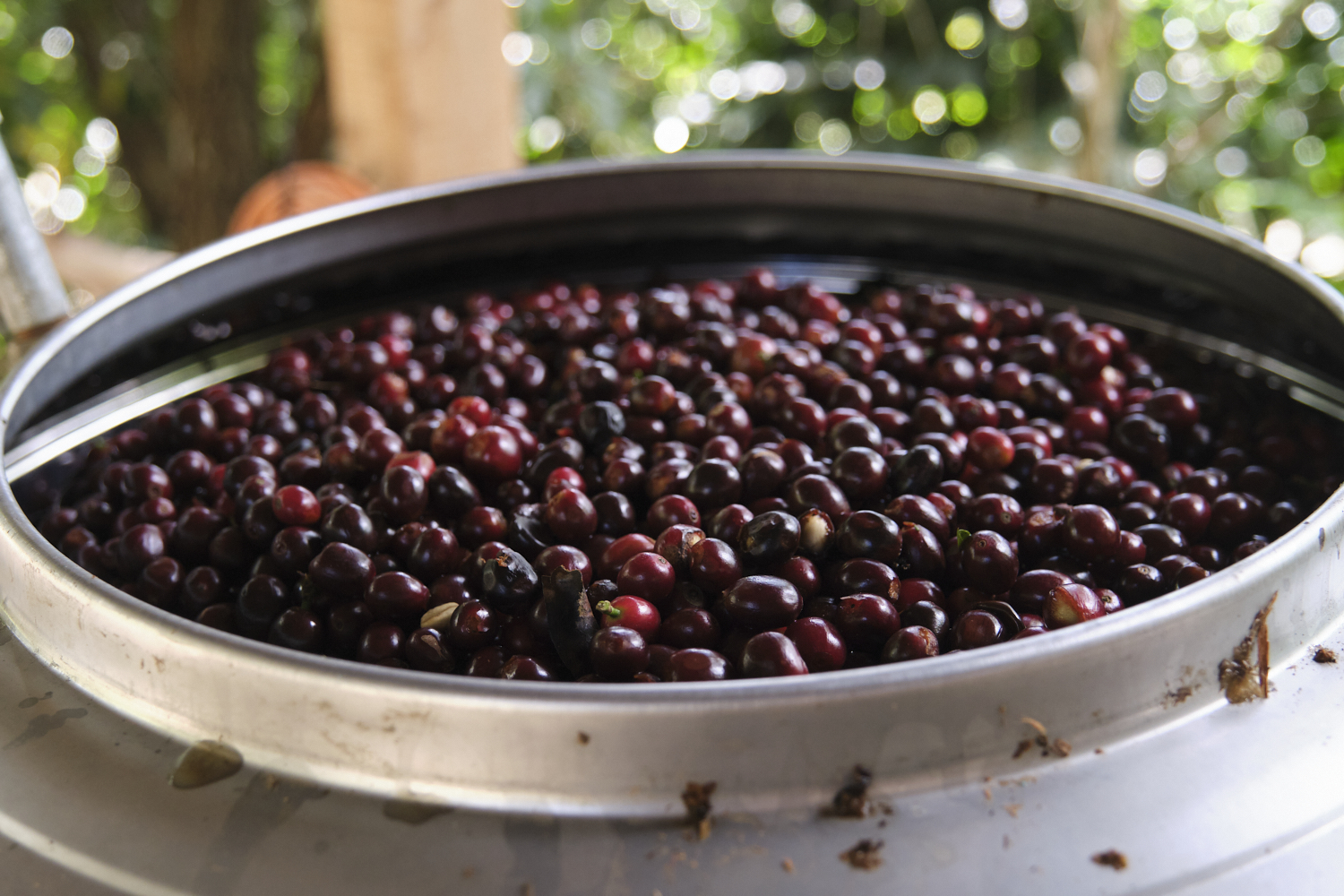
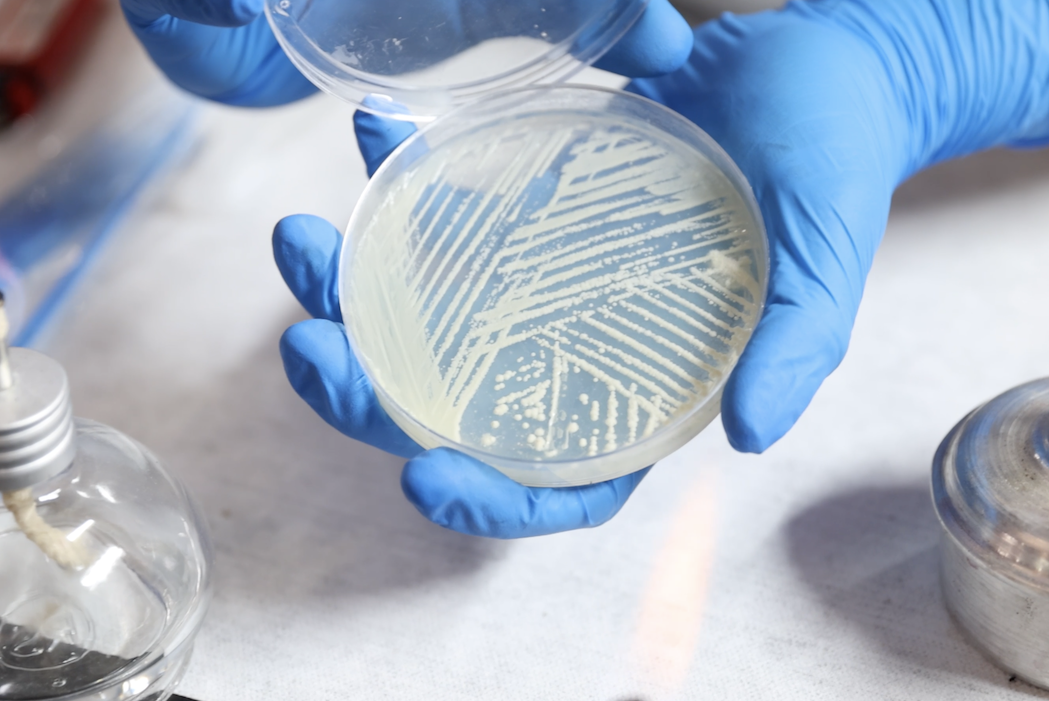
Microbes are the force responsible for how fruit tissue breaks down, the compounds and flavor precursors that are released during fermentation, and nearly all other fermentation outcomes. Therefore, creating an environment for fermentation that favors certain microbe species over others can result in unique flavor profiles – exactly what we see in well-cared-for anaerobically fermented coffees.
When we use the term “anaerobic” about coffee processing, we are only referring to one of the steps the coffee has gone through. We would be more accurate if we said something like, “an anaerobic step for X duration of time,” or, “fermented in an anaerobic environment for X period of time.”
Being fermented in a low-oxygen environment for any amount of time does not tell the whole story of that coffee’s post-harvest treatment. Going through the anaerobic fermentation step does not change the need to decide on the main processing method to use – coffees fermented anaerobically are still processed as washed, honey, or natural.
Saying a coffee is anaerobically fermented also does not reveal all the steps the coffee may have been put through before, during, or after the fermentation. There is great variation in this process from farm to farm and country to country. For example, a koji step could have been done prior to anaerobic fermentation. Yeast or other modifiers could be added to the tank and impact the fermentation. A coffee may be pre-fermented for 24 hours prior to the anaerobic step or fermented again for some period of time after the anaerobic step, say, in an open-air tank.
Additionally, the fermentation process is technically (chemically) anaerobic, meaning that no oxygen molecules are utilized in the chemical reactions involved in fermentation. Some more technically and chemically minded folks might say that the term “anaerobic fermentation” is redundant – fermentation is already chemically anaerobic. However, if we remember that term anaerobic refers to the environment the coffee is fermented in, we’re all back on the same page. Just further reasoning why it’s more accurate to use something closer to the phrases mentioned above and refer to the environment the coffee is fermented in as being low-oxygen/anaerobic, as well as the time this step was carried out for than to call any coffee that’s spent time in an anaerobic environment “an anaerobic coffee.”
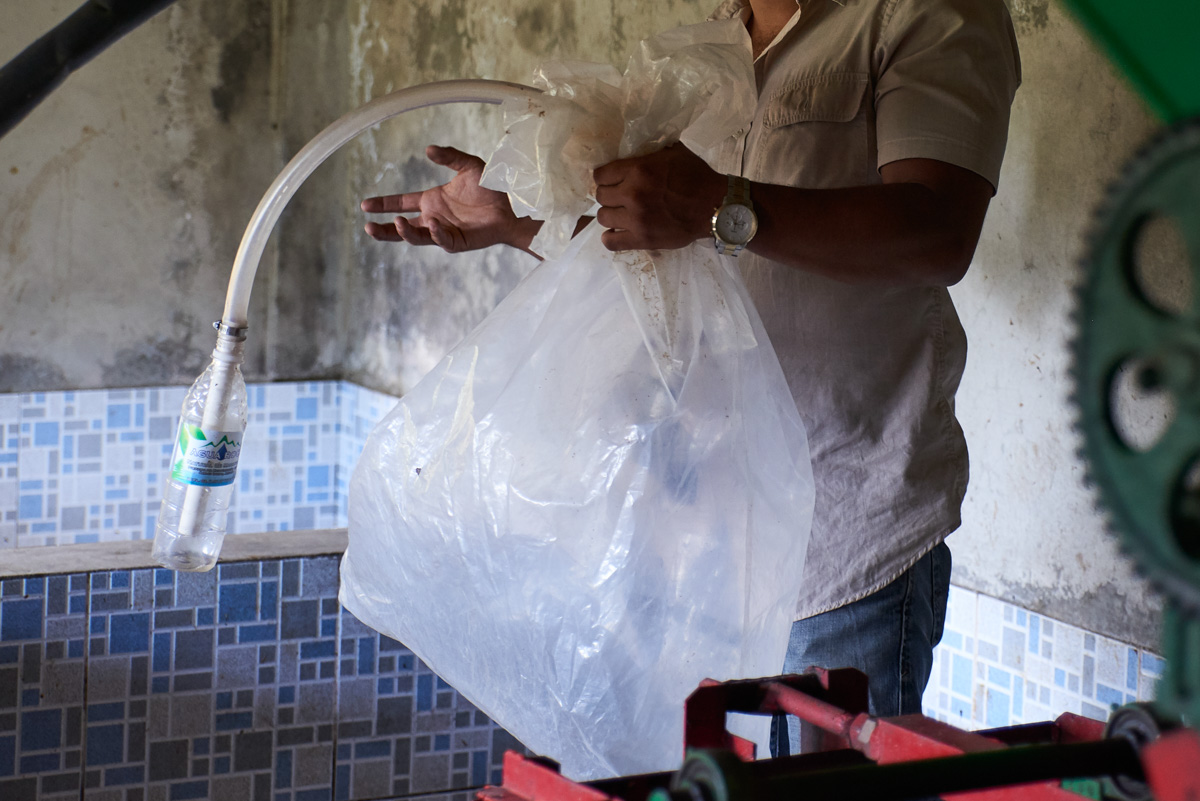
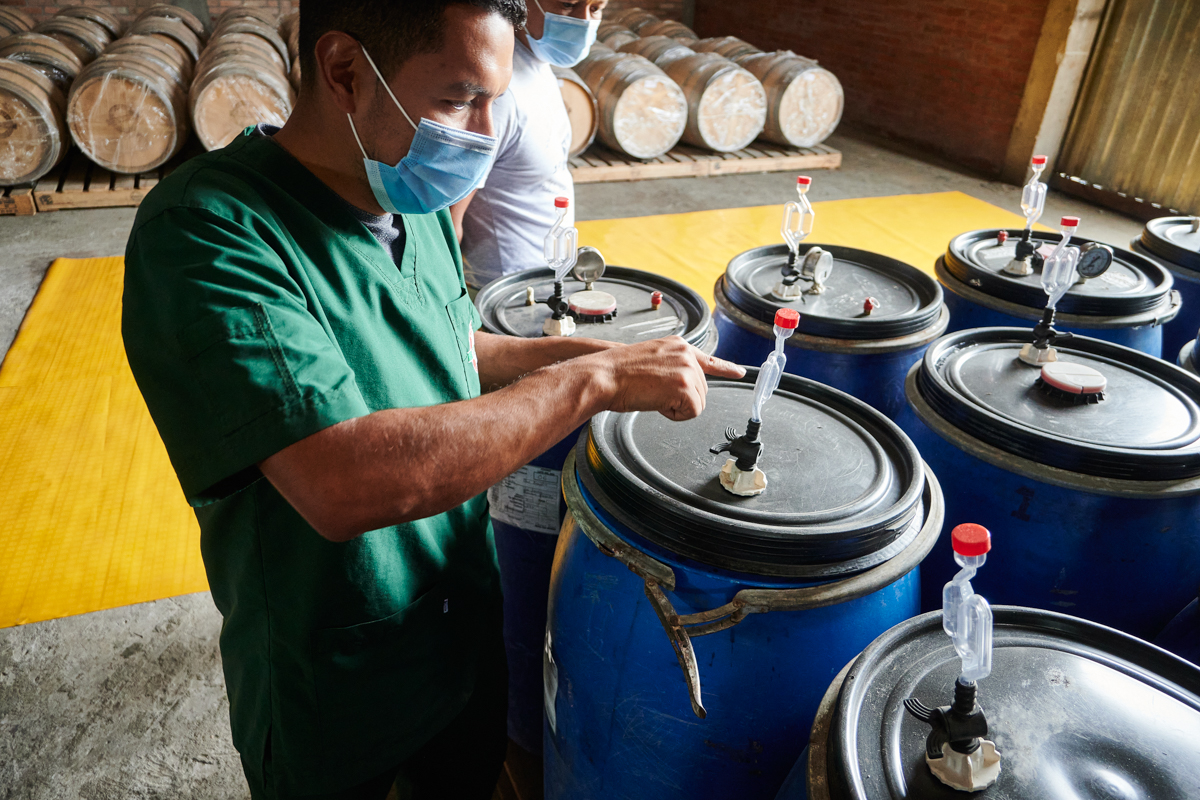
Materials
Different fermentation tank materials have different benefits. Stainless steel is common, as is thick plastic. Plastic bags that tie off and have no holes can also be used.
Decisions about which materials to use are made based on several considerations, such as scale, the ability to clean the tanks and processing space (stainless steel doesn’t rust and cleans/sterilizes well), and temperature retention (there’s a big difference in temperature conduction and insulation potential between metal, thick plastic, thin plastic, concrete, tiled concrete, etc.). Much of the decision-making, however, is based on resources available to the person doing the processing. Producers and processors without the purchasing power for specialized tanks might use plastic barrels or buckets with lids that seal well, a common byproduct of food service and sold relatively cheaply. Others have luck using plastic bags like GrainPro, which are designed to restrict oxygen from entering when tied off well at the top.
Tanks built for anaerobic fermentation are often outfitted with one-way valves that allow oxygen to escape the vessel but not enter. The valves also release some of the CO2 created during the fermentation process, ensuring the container doesn’t burst with the pressure of the gasses as they build.
Time is one way to measure fermentation. Monitoring the pH, Brix (soluble solids, mainly sugar), temperature, and visible cues like color, taste, smell, and bubble activity are likely even more critical as indicators that demonstrate when a coffee is beginning to ferment, when fermentation is well underway, and when it’s nearing its end.
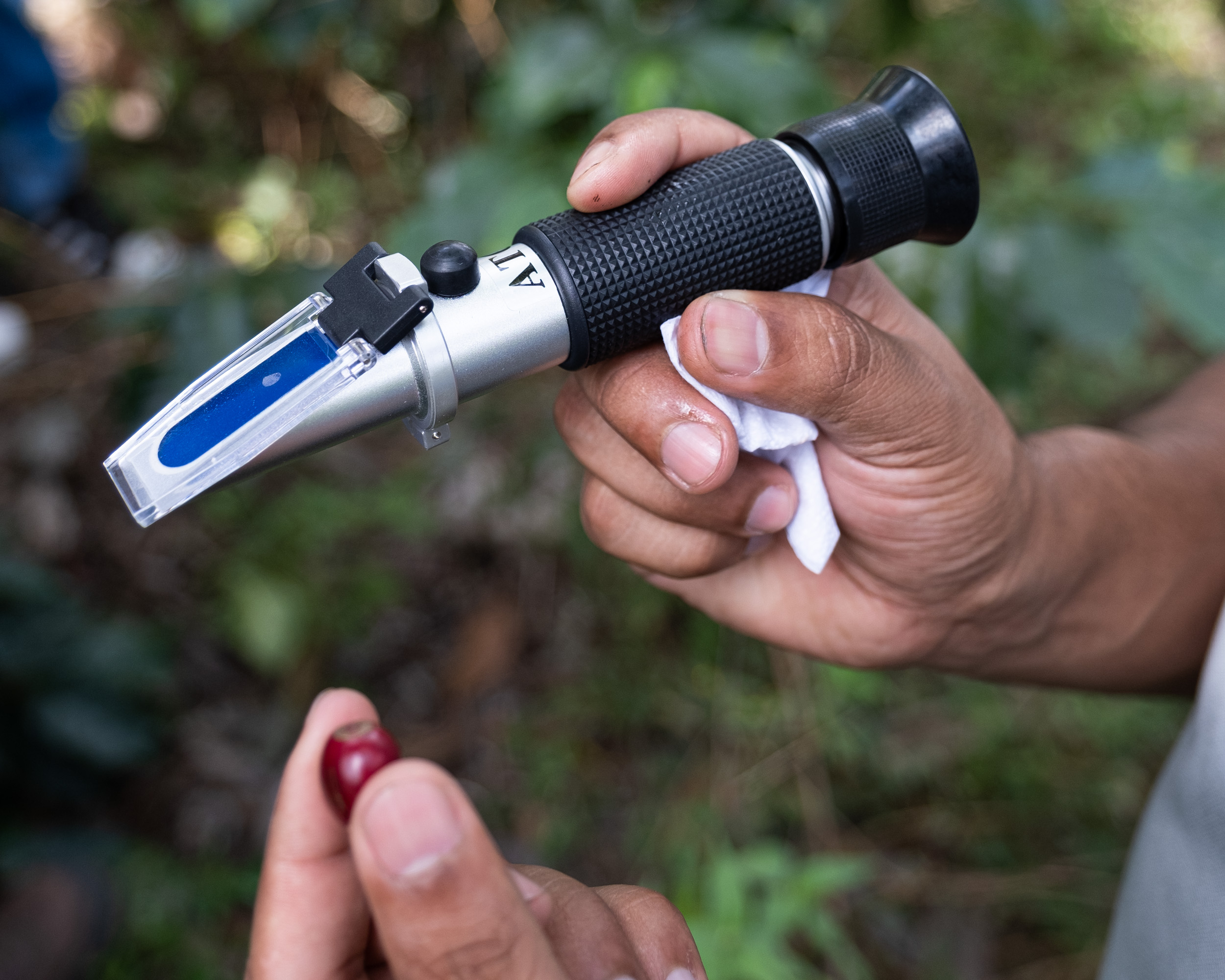
Anaerobically fermented coffees require substantial infrastructure, special monitoring, and tank space is often limited. Therefore, these coffees are typically sold as microlots. Modulating coffee processing with this time-and-resource-intensive fermentation method is one of the more recent ways that producers can differentiate their offerings and expand the spectrum of flavors we can experience in the cup.
With washed, honey, and natural coffees, the industry has developed set expectations for how the cup profiles vary from one another. This isn’t quite where we are at with anaerobic fermentation yet, however. Differentiations between honey, natural, and washed processes are clear, and therefore the potential outcomes are also clear. However, it’s difficult to empirically say what anaerobic fermentation does to the final cup because this terminology leaves room for an incredible number of variables to still be at play, each of which can produce varied outcomes. And, it’s only one step within the larger processing method. Even if we know a coffee was fermented anaerobically, there is still a lot to know about what that coffee went through; without that information, it’s hard to pinpoint what to expect. We do know, though, that some producers and processors have found ways to incorporate this fermentation method into their processing styles with great success, and we love the innovation.
To showcase anaerobic fermentation, we visited La Chumeca in Tarrazu, Costa Rica. A special thank you to Martin Urena and His son Emilio who allowed us to follow them through the making of their delicious anaerobic natural coffees!